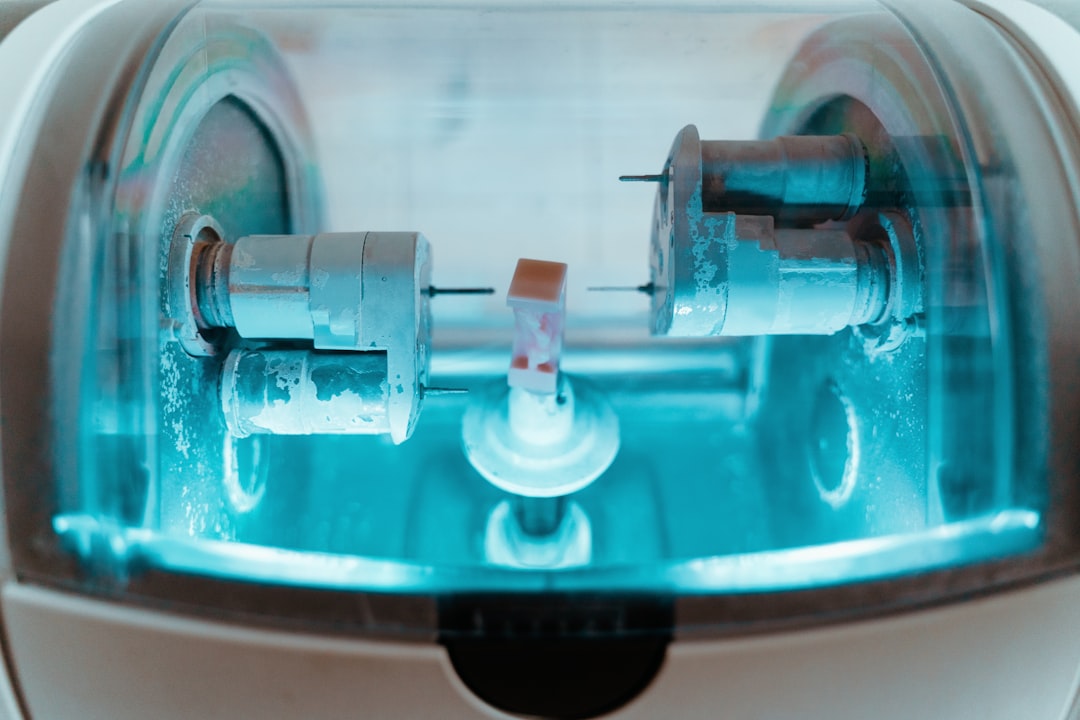Laser hair removal is a popular cosmetic procedure that uses a concentrated beam of light (laser) to remove unwanted hair. The laser targets the pigment in the hair follicles, heating them up and destroying the hair at the root. This results in a long-term reduction in hair growth, making it a convenient and effective solution for those looking to eliminate the need for constant shaving, waxing, or plucking. Laser hair removal can be performed on various parts of the body, including the face, legs, arms, underarms, bikini line, and more.
Laser hair removal is a safe and FDA-approved procedure when performed by a trained professional. It is important to note that results may vary depending on factors such as hair color, skin type, and the area being treated. Multiple sessions are usually required to achieve the best results, as hair grows in different cycles and the laser is most effective on actively growing hairs. Overall, laser hair removal offers a long-term solution for reducing unwanted hair and can provide smooth, hair-free skin for an extended period of time.
Key Takeaways
- Laser hair removal is a popular and effective method for long-term hair reduction.
- Before your laser hair removal appointment, it’s important to avoid sun exposure and certain hair removal methods.
- The laser hair removal process involves targeting hair follicles with concentrated light to inhibit future hair growth.
- A step-by-step tutorial for laser hair removal includes prepping the skin, applying the laser, and post-treatment care.
- Aftercare for laser hair removal includes avoiding sun exposure and using gentle skincare products.
Preparing for Laser Hair Removal
Before undergoing laser hair removal, there are several steps you can take to prepare for the procedure. First and foremost, it is essential to find a reputable and experienced provider who specializes in laser hair removal. Researching and reading reviews can help you make an informed decision about where to have the procedure done. Once you have chosen a provider, schedule a consultation to discuss your goals, expectations, and any concerns you may have.
In the weeks leading up to your laser hair removal appointment, it is important to avoid sun exposure and tanning beds, as this can increase the risk of complications and affect the effectiveness of the treatment. Additionally, it is recommended to avoid plucking, waxing, or electrolysis for at least six weeks before the procedure, as these methods can disturb the hair follicle and interfere with the laser’s ability to target the pigment in the hair. Shaving is typically allowed and even encouraged before laser hair removal, as it preserves the hair shaft while removing the visible hair above the skin’s surface.
Understanding the Laser Hair Removal Process
The laser hair removal process begins with the application of a numbing gel or cream to the treatment area to minimize any discomfort during the procedure. The technician will then adjust the laser settings based on your skin type, hair color, and the area being treated. You will be provided with protective eyewear to shield your eyes from the laser light. The technician will then use a handheld device to deliver quick pulses of laser light to the targeted area.
The laser emits a concentrated beam of light that is absorbed by the pigment in the hair follicles. This heat damages the follicle and inhibits future hair growth. The sensation during the procedure is often described as a mild stinging or snapping feeling, similar to a rubber band being snapped against the skin. The duration of the treatment will depend on the size of the area being treated, with smaller areas such as the upper lip taking just a few minutes, while larger areas like the legs or back may take up to an hour.
Step-by-Step Tutorial for Laser Hair Removal
| Step | Description |
|---|---|
| 1 | Consultation with a dermatologist or licensed technician |
| 2 | Skin preparation, including shaving the treatment area |
| 3 | Application of numbing cream, if necessary |
| 4 | Laser hair removal treatment session |
| 5 | Post-treatment care instructions, including avoiding sun exposure |
1. Consultation: Schedule a consultation with a qualified provider to discuss your goals and expectations for laser hair removal. This is also an opportunity to ask any questions you may have about the procedure and ensure that you are a good candidate for treatment.
2. Preparing for Treatment: In the weeks leading up to your laser hair removal appointment, avoid sun exposure and tanning beds, as well as plucking, waxing, or electrolysis. Shaving is allowed and even encouraged before treatment.
3. Numbing: Before the procedure begins, a numbing gel or cream will be applied to the treatment area to minimize any discomfort during the treatment.
4. Laser Settings: The technician will adjust the laser settings based on your skin type, hair color, and the area being treated to ensure optimal results.
5. Protective Eyewear: You will be provided with protective eyewear to shield your eyes from the laser light during the treatment.
6. Treatment: The technician will use a handheld device to deliver quick pulses of laser light to the targeted area, heating and damaging the hair follicles to inhibit future growth.
7. Sensation: The sensation during treatment is often described as a mild stinging or snapping feeling, similar to a rubber band being snapped against the skin.
8. Duration: The duration of the treatment will depend on the size of the area being treated, with smaller areas taking just a few minutes and larger areas taking up to an hour.
Aftercare and Maintenance
After undergoing laser hair removal, it is important to follow specific aftercare instructions to ensure optimal results and minimize any potential side effects. It is common to experience redness and slight swelling in the treated area immediately following the procedure. This typically subsides within a few hours, but applying ice packs or aloe vera gel can help soothe any discomfort.
It is important to avoid sun exposure and tanning beds for at least a week after treatment, as your skin may be more sensitive to UV rays. Additionally, it is recommended to avoid hot showers, saunas, and strenuous exercise for 24-48 hours post-treatment to allow your skin to recover. It is also essential to apply sunscreen with a high SPF to protect your skin from sun damage.
In terms of maintenance, multiple sessions are usually required to achieve optimal results, as hair grows in different cycles and the laser is most effective on actively growing hairs. Your provider will recommend a treatment plan based on your individual needs and goals. It is important to follow this plan and attend all scheduled sessions for the best outcome.
Tips and Tricks for Successful Laser Hair Removal

1. Choose a reputable provider: Research and read reviews to find a qualified and experienced provider who specializes in laser hair removal.
2. Follow pre-treatment guidelines: Avoid sun exposure and tanning beds, as well as plucking, waxing, or electrolysis in the weeks leading up to your appointment.
3. Communicate with your provider: Be open and honest about your goals, expectations, and any concerns you may have during your consultation.
4. Follow aftercare instructions: Apply ice packs or aloe vera gel to soothe any redness or swelling post-treatment and avoid sun exposure and hot showers for at least a week.
5. Attend all scheduled sessions: Multiple sessions are typically required for optimal results, so it is important to follow your provider’s recommended treatment plan.
Frequently Asked Questions about Laser Hair Removal
Q: Is laser hair removal permanent?
A: While laser hair removal can provide long-term reduction in hair growth, it is not guaranteed to be permanent. Some individuals may experience regrowth over time and may require occasional maintenance sessions.
Q: Is laser hair removal painful?
A: The sensation during laser hair removal is often described as a mild stinging or snapping feeling, similar to a rubber band being snapped against the skin. Numbing creams or gels can be applied before treatment to minimize any discomfort.
Q: Are there any risks or side effects associated with laser hair removal?
A: Common side effects of laser hair removal include redness, swelling, and temporary discomfort in the treated area. More serious side effects such as burns or changes in skin pigmentation are rare but possible if not performed by a trained professional.
Q: How many sessions are typically required for optimal results?
A: The number of sessions required for optimal results varies depending on factors such as hair color, skin type, and the area being treated. Most individuals require multiple sessions spaced several weeks apart to achieve their desired outcome.
Q: Can laser hair removal be performed on all skin types?
A: Advances in technology have made it possible for laser hair removal to be performed on individuals with various skin types. However, it is important to consult with a qualified provider who can determine the most suitable treatment approach for your specific skin type.
In conclusion, laser hair removal offers a convenient and effective solution for reducing unwanted hair growth on various parts of the body. By following pre-treatment guidelines, understanding the process, adhering to aftercare instructions, and attending all scheduled sessions, individuals can achieve optimal results and enjoy long-term reduction in hair growth. It is important to choose a reputable provider who specializes in laser hair removal and communicate openly about your goals and expectations to ensure a successful treatment experience.
If you’re curious about the step-by-step process of laser hair removal, you’ll find a comprehensive guide in this informative YouTube video. For more insights into the world of laser hair removal, you might want to check out an article on the cost of laser hair removal for legs at Inlaserhairremoval.com. This article provides valuable information on the pricing aspect of this popular treatment.
FAQs
What is laser hair removal?
Laser hair removal is a cosmetic procedure that uses a concentrated beam of light (laser) to remove unwanted hair. The laser targets the pigment in the hair follicles, damaging them and inhibiting future hair growth.
How does laser hair removal work?
During laser hair removal, the laser emits a light that is absorbed by the pigment in the hair follicles. This damages the follicles and inhibits their ability to grow new hair. Over time and multiple sessions, the hair becomes finer and less noticeable.
Is laser hair removal permanent?
Laser hair removal can lead to long-term hair reduction, but it is not always permanent. Some hair may grow back, but it is often finer and lighter in color. Maintenance sessions may be needed to maintain the results.
What areas of the body can be treated with laser hair removal?
Laser hair removal can be used to treat unwanted hair on various areas of the body, including the face, legs, arms, underarms, bikini line, and back.
Is laser hair removal safe?
When performed by a qualified and experienced professional, laser hair removal is generally considered safe. However, there are potential risks such as skin irritation, pigment changes, and rare cases of scarring. It is important to follow pre- and post-treatment care instructions to minimize these risks.
How many sessions are needed for laser hair removal?
The number of sessions needed for laser hair removal varies depending on factors such as the individual’s hair color, skin type, and the area being treated. On average, multiple sessions spaced several weeks apart are required to achieve the best results.






